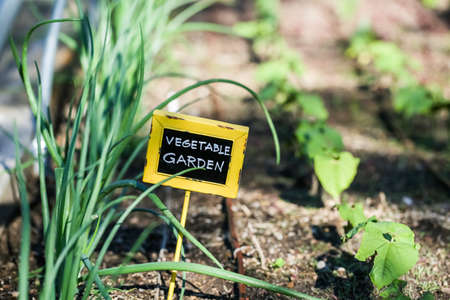Introduction: The Importance of Soil Health in UK Gardens
For British gardeners, soil health is the very foundation of a thriving garden. Whether you tend a small city plot or a sprawling countryside allotment, the quality of your soil determines how well your plants will grow. In the UK, where weather patterns can be unpredictable and soils range from rich loam to heavy clay, understanding and nurturing your soil is essential. Healthy soil supports robust root systems, boosts plant immunity, and ensures bountiful harvests. With the growing popularity of raised beds alongside traditional ground planting, many gardeners are now questioning which method best supports optimal soil health. This article sets the stage for exploring how raised beds compare to traditional ground planting in British gardens, highlighting why getting your soil right truly matters.
Understanding Raised Beds and Traditional Ground Planting
In British gardens, the choice between raised beds and traditional ground planting has a direct impact on soil health and plant success. To make an informed decision, it is essential to understand the structure and purpose of each method, especially considering the diverse climate and soil types found across the UK.
What Are Raised Beds?
Raised beds are garden plots constructed above the natural ground level, usually framed with wood, brick, or other materials. They are filled with a blend of imported topsoil, compost, and organic matter. The main aim is to create improved growing conditions, better drainage, and easier access for gardeners.
Traditional Ground Planting Explained
Traditional ground planting involves sowing or planting directly into the existing garden soil. This method relies heavily on the native soil type—be it sandy, clayey, loamy, or chalky—common throughout British regions. While this approach preserves a natural soil ecosystem, it can pose challenges when local soils are compacted, poorly draining, or nutrient deficient.
Comparing Structure and Purpose in British Gardens
| Aspect | Raised Beds | Traditional Ground Planting |
|---|---|---|
| Soil Control | High; allows custom mixes suited to crops | Limited; depends on natural soil condition |
| Drainage | Excellent; prevents waterlogging even in heavy rain | Variable; clay soils may suffer from poor drainage |
| Ease of Access | Easier; raised height reduces bending and makes maintenance simpler | Standard; requires more bending and kneeling |
| Soil Warming | Faster in spring due to elevation and improved aeration | Slower; may delay early sowing in colder regions |
| Biodiversity Support | Slightly reduced due to isolated environment | Higher; connects directly with surrounding ecosystem |
| Adaptability to Poor Soils | Ideal for gardens with heavy clay or thin soils typical in parts of Britain | Difficult without significant amendment work |
The British Climate Factor
The UKs temperate climate brings regular rainfall and fluctuating temperatures. Raised beds offer a practical solution for managing excess moisture in wet areas or improving warmth and drainage where heavy clay dominates—frequent issues from Cornwall to Scotland. Conversely, traditional ground planting remains effective in well-drained loamy soils but may require more effort in less favourable conditions.

3. Soil Composition and Drainage
One of the most notable differences between raised beds and traditional ground planting in British gardens is soil composition and drainage. Raised beds offer gardeners the unique advantage of controlling the soil mix from the outset. This means you can blend topsoil, compost, organic matter, and grit to create a balanced, nutrient-rich environment tailored to your plants’ needs. Good structure supports healthy root growth and reduces compaction, which is especially important given the UK’s clay-heavy soils in many regions.
In contrast, traditional ground planting relies on the existing garden soil, which may not be ideal for all plants. Many British gardens contend with heavy clay or poor-draining soils that easily become waterlogged during the frequent rainfall typical of the UK climate. This can restrict oxygen to roots, slow down plant growth, and even lead to root rot in sensitive species.
Raised beds naturally improve drainage due to their elevation above ground level. Excess rainwater can flow away more freely, preventing the pooling that often plagues ground-level plots after a wet spell. Additionally, gardeners can add coarse sand or gravel to further enhance drainage within a raised bed, adapting quickly to local weather patterns.
On the other hand, improving drainage in traditional beds often involves back-breaking work—digging in organic matter year after year or installing complex drainage solutions. For those facing persistent soggy patches or compacted earth, raised beds offer a practical solution that aligns well with Britain’s famously unpredictable weather.
4. Nutrient Management and Soil Fertility
Effective nutrient management is at the heart of soil health in both raised beds and traditional ground planting, particularly in British gardens where practices such as mulching, composting, and crop rotation are widely embraced. Each method offers unique opportunities and challenges when it comes to maintaining soil fertility over time.
Mulching
Mulching is a common practice in Britain for both raised beds and ground plots. In raised beds, mulching with organic materials like leaf mould or well-rotted manure helps retain moisture and suppress weeds due to the contained environment. Ground planting also benefits from mulching, though larger open areas may require more material and effort to maintain an even layer.
Composting
Composting is central to British gardening culture, providing a sustainable way to enrich the soil. Raised beds allow for targeted application of homemade compost, making it easier to adjust nutrient levels for specific crops. In traditional beds, spreading compost can be less precise but benefits larger areas simultaneously.
Crop Rotation
Crop rotation helps prevent nutrient depletion and breaks pest cycles. In raised beds, gardeners often rotate crops annually within their defined spaces. Traditional ground plots offer greater flexibility for large-scale rotation but may require more planning due to space constraints and plot size.
Nutrient Management Comparison Table
| Nutrient Practice | Raised Beds | Traditional Ground Planting |
|---|---|---|
| Mulching | Efficient coverage; retains moisture well; easy to manage in small spaces | Requires more material; effective but labour-intensive on larger plots |
| Composting | Targeted enrichment; easy to monitor soil response | Widespread application; less control over specific areas |
| Crop Rotation | Straightforward within compact beds; limits risk of disease build-up | Larger scale; offers flexibility but demands careful planning |
Summary of British Approaches
Both systems benefit from these traditional British methods, but the controlled nature of raised beds provides greater precision in managing nutrients and soil fertility. Traditional ground planting relies on scale and established routines, making it ideal for experienced gardeners with ample space.
5. Pest and Disease Control
When it comes to managing pests and diseases in British gardens, the method of planting—raised beds or traditional ground plots—can make a significant difference. Soil-borne problems such as clubroot, a common brassica disease in the UK, and troublesome garden pests like slugs are key concerns for local gardeners.
Raised Beds: Improved Protection
Raised beds offer an advantage by allowing you to use fresh, sterile compost or well-chosen soil mixes, reducing the risk of carrying over persistent soil-borne diseases from previous years. Because raised beds are often isolated from surrounding earth, theres less chance of contamination from neighbouring infected areas. Their defined borders also make it easier to install barriers against crawling pests such as slugs and snails—a frequent nuisance in the British climate.
Managing Clubroot
Clubroot thrives in acidic, poorly-drained soils and is notoriously hard to eradicate once established. Raised beds allow for better drainage and pH control by amending the soil more precisely. This can help keep clubroot at bay, especially if using fresh compost and crop rotation within the bed.
Traditional Ground Planting: Higher Risk Factors
In contrast, traditional ground planting often involves working with existing garden soil, which may already harbour pathogens or pest eggs from previous seasons. The larger area can also make it more difficult to control outbreaks of diseases like potato blight or infestations of wireworms and slugs. Movement of these pests between plant rows is easier on open ground, leading to potentially wider spread problems.
Slugs in British Gardens
The damp British weather creates ideal conditions for slugs, especially in undisturbed ground where they can hide under clumps of weeds or decaying matter. Raised beds dry out quicker after rain and their neat edges can be fitted with copper tape or other deterrents more easily than sprawling ground plots.
Summary
While no method guarantees complete immunity from pests and diseases, raised beds generally provide greater control and fewer issues compared to traditional ground planting in most UK gardens. Good hygiene practices, regular monitoring, and careful crop selection remain important whichever approach you choose.
6. Wildlife and Soil Ecosystems
When comparing soil health in raised beds versus traditional ground planting in British gardens, it’s important to consider the impact on local wildlife and the wider soil ecosystem. Earthworms, beneficial insects, and a wide range of microorganisms all play vital roles in maintaining fertile, living soils.
Earthworms: The Garden’s Natural Tillers
In traditional ground beds, earthworm populations tend to thrive due to unrestricted movement and natural connections with the wider landscape. Earthworms aerate the soil and break down organic matter, directly enhancing soil structure and fertility. In raised beds, especially those with solid bases or liners, earthworm access can be limited unless compost or garden soil rich in worms is added during setup. For best results, open-bottomed raised beds are recommended to encourage earthworm colonisation.
Beneficial Insects and Pollinators
British gardens rely on beneficial insects such as beetles, spiders, and solitary bees for pest control and pollination. Traditional ground planting offers a more continuous habitat for these creatures, allowing them to move freely between garden beds. Raised beds, if well-planted and mulched, can also attract beneficial insects but may require deliberate planting of insect-friendly flowers and habitats nearby to ensure good biodiversity.
Soil Microorganisms and Biodiversity
The invisible life within soil—fungi, bacteria, nematodes—forms a complex web that supports healthy plant growth. Traditional ground soils often have a greater diversity of microorganisms because they are less likely to dry out or become compacted. Raised beds may initially have lower microbial diversity if filled with shop-bought compost or sterile mixes. However, by regularly adding homemade compost, leaf mould, or well-rotted manure, gardeners can boost microbial life in raised beds over time.
Encouraging Biodiversity in Both Systems
Both raised beds and traditional ground planting can support a rich soil ecosystem if managed thoughtfully. Including log piles, wildflower corners, and undisturbed patches nearby will invite wildlife into the garden. Avoiding chemical pesticides and digging only when necessary will further protect the intricate balance beneath our feet—whether in a raised bed or directly in the ground.
7. Conclusion: Choosing the Best Approach for Your Garden
In summary, both raised beds and traditional ground planting have their unique advantages and challenges when it comes to soil health in British gardens. Raised beds offer superior drainage, warmer soils, and greater control over soil composition—ideal for areas with heavy clay or poor native soil. However, they may require more initial investment in materials and regular maintenance to retain their structure and fertility. Traditional ground planting benefits from a natural ecosystem and often requires less set-up, but can struggle with compaction, poor drainage, or persistent weeds, especially in wetter regions of the UK.
When deciding which approach suits your garden best, consider your local climate (for example, the frequent rain in much of Britain), available space, budget, and personal gardening style. If you have limited mobility or want to minimise bending, raised beds are a practical option. For those who prefer a more traditional look or wish to establish wildlife-friendly borders, ground planting may be preferable.
Top tips: Always assess your garden’s microclimate before making changes. For raised beds, use a mix of compost, well-rotted manure, and topsoil to create rich growing conditions. With ground beds, improve soil health by mulching annually and practicing crop rotation. Ultimately, the healthiest soil—and most rewarding garden—comes from ongoing care tailored to your specific British garden environment and personal needs.


